The Jews couldn't walk the streets. They were always paralyzed at the sight of the armchair, they looked down, the ladies put a hat over their faces. I taught them not to look down, to be confident. Women - to go straight to the patrol chief, swing your hip, smile flirtingly.
During World War II, women and men joined the ranks of the underground. "Everyone belonged somewhere" - admits one of the main characters of Łukasz Modelski's book "Girls of War". Barbara Wilczyńska-Sekulska confirms:"Everyone joined the organization to which they had access." She just had access to the Home Army. She was active in the Kiliński battalion.
The widespread participation of women in conspiratorial activities meant that they also had to master the art of avoiding the dangers lurking everywhere. What were they doing to avoid falling into the hands of the Gestapo?
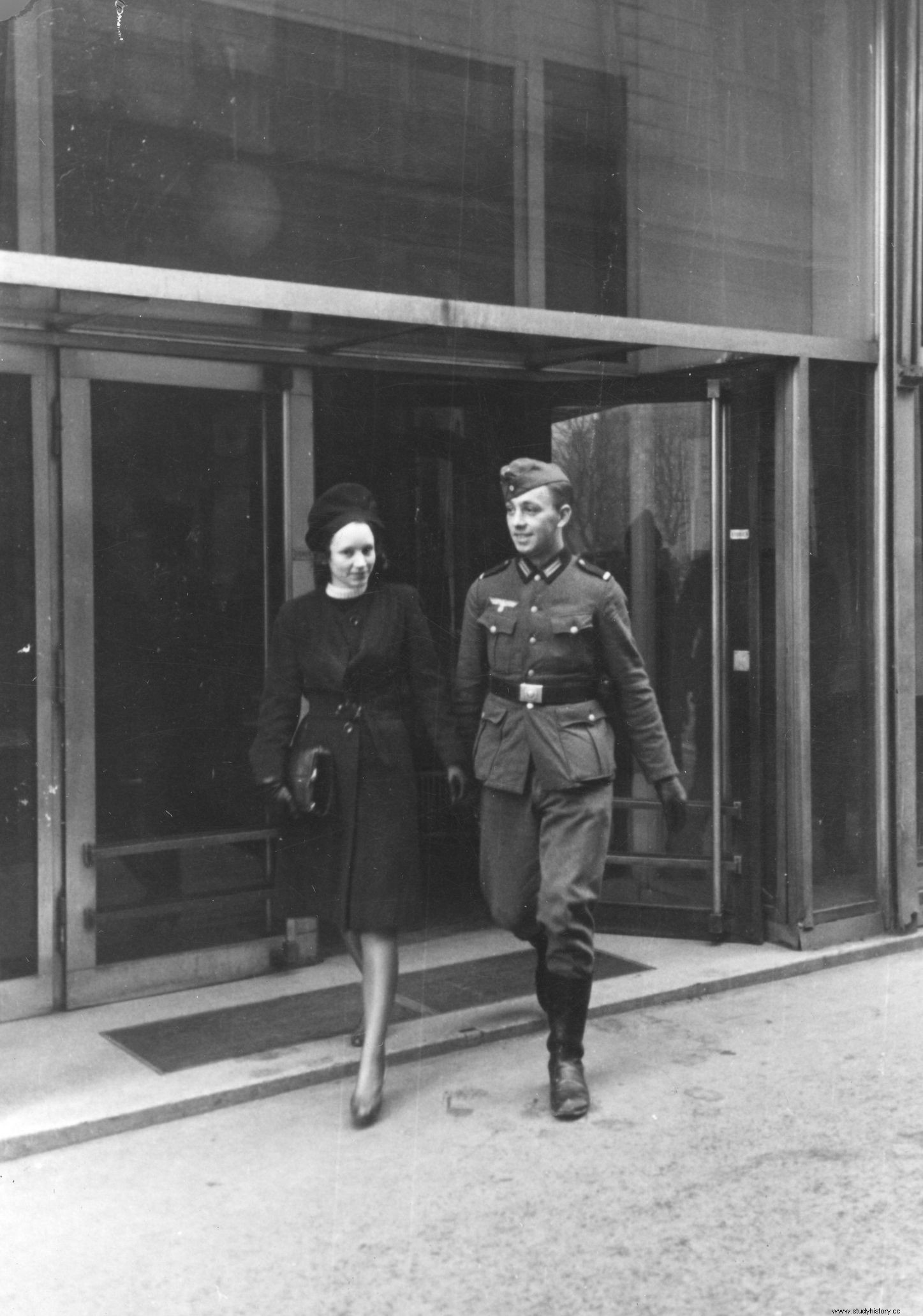
Permanent, but of course informal, ties between Germans and Polish or Russian women were so frequent that among the officials of the Main Reich Security Office they even developed a special term "Ostehe", or "Eastern marriage".
Legal work
The first method seems simple, but it could be surprisingly effective. The basis for avoiding capture by the occupant, regardless of whether you were a man or a woman, was that ... having a legal job , preferably in one of the occupation offices. Balbina Szymańska-Ignaczewska from the Home Army talked about how it made life easier:
Before the uprising, I worked as a telegraphist in PERUNA, it was then an Austrian-German company. Thanks to this, I had a pass that allowed me to walk the streets and saved me from a round-up. Then I found out that many other people from the underground worked there too.
Sometimes, however, even despite the camouflage, there was an exposure. In this situation, the only option was to hide. Gestapo disappeared from sight, constantly changing underground premises. It was also possible to miss one of the numerous secret vaults that swarmed in occupied Poland.
Hideouts and secret passages
Łukasz Modelski in the book "Girls of War" describes the story of Halina Rajewska, who was taken by the Gestapo from her house in Szczebrzeszyn straight from the wedding. . In fact, she could actually escape. In her house there was a secret passage leading to the local ghetto. They were usually used by Jews who wanted to get out of the closure. This time, all the wedding guests passed it the other way. As Rajewska said:
I flew rapidly through the kitchen, lowered the raised hatch, and stepped on it, leveling it with the floor so that it was not visible that there was a passage. The Germans didn't even look there. Four of them entered. They screamed.
Indeed, such hiding places, secret passages, and hidden cells were found in surprisingly many Polish homes during the occupation. Usually they were organized in villages and smaller towns, but also in towns.
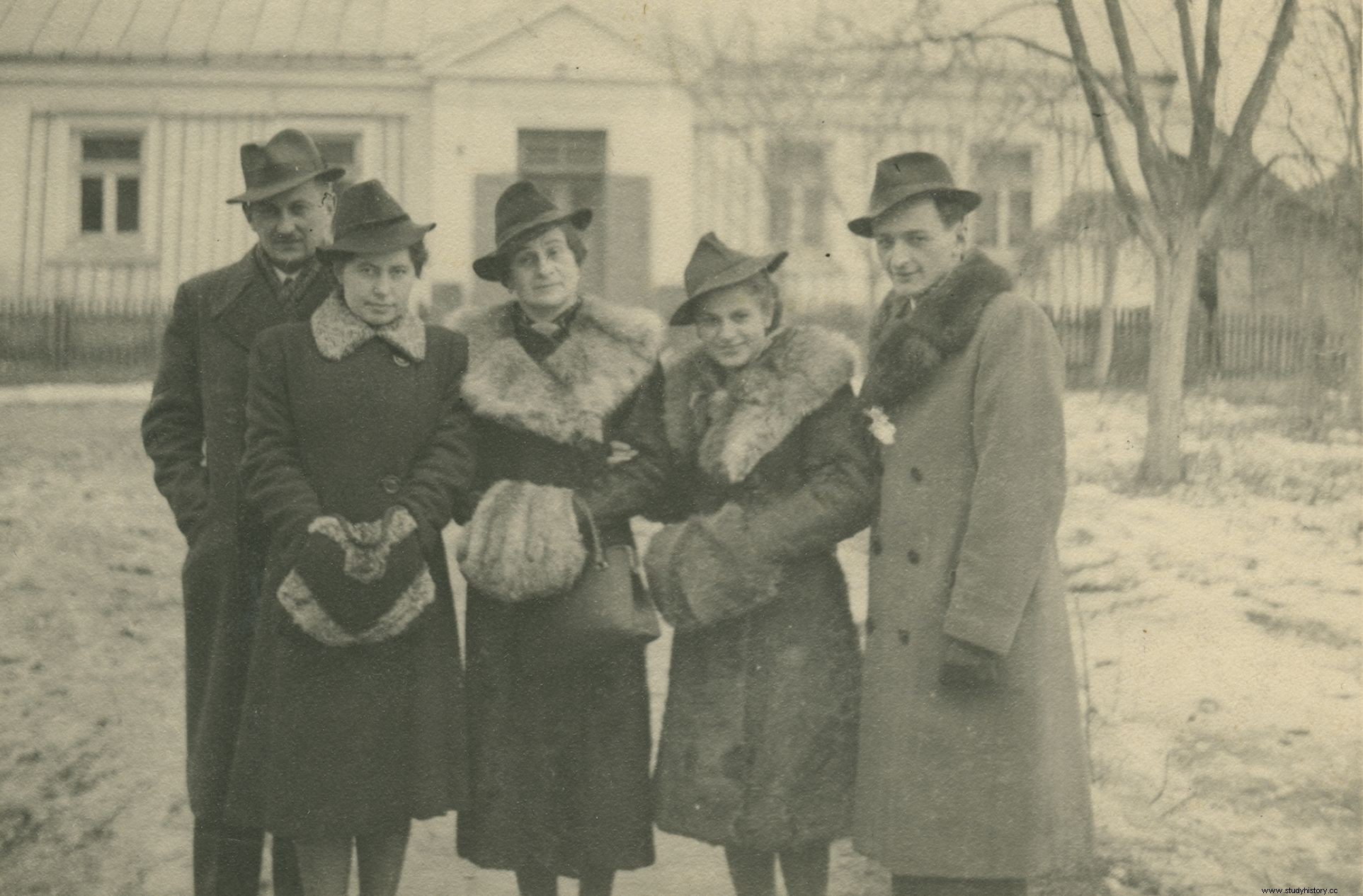
1941, photograph taken just before the wedding of Halina Rajewska. Photo from the book "War Girls" (Znak Horyzont 2017).
Barbara Secomska, who was a little girl during the war, remembered the hideout from her apartment. "We also had a special hiding place in the apartment, where you could hide, so that you would not find it easily, a piece of double wall or something like that" - he recalls. These were not entirely safe places, but in extreme situations they allowed burnt conspirators or rescued Jews to survive for some time. They were also stockpiles of weapons and tissue paper.
Constant moving
Another, more "urban" way of the conspirators to avoid being arrested by the Gestapo was to regularly change their place of residence. Members of underground organizations had no chance of privacy. Each of them automatically became a conspiratorial place where the fugitives could take refuge.
Magda Rusinek, a soldier of the Warsaw Home Army liquidation and subversion groups, the so-called Department 993 / W, learned about this extraordinary underground hospitality. Very soon after being sworn in, she had to move out of the apartment she shared with her grandmother. She was staying with friends. This is what he tells about the atmosphere in the new place:
In May 1942, I started to live with them, moreover, with a whole crowd of other people, wanted, Jewish, or simply unable to cope. The crowd was huge, but Haneczka's mother never refused anyone.
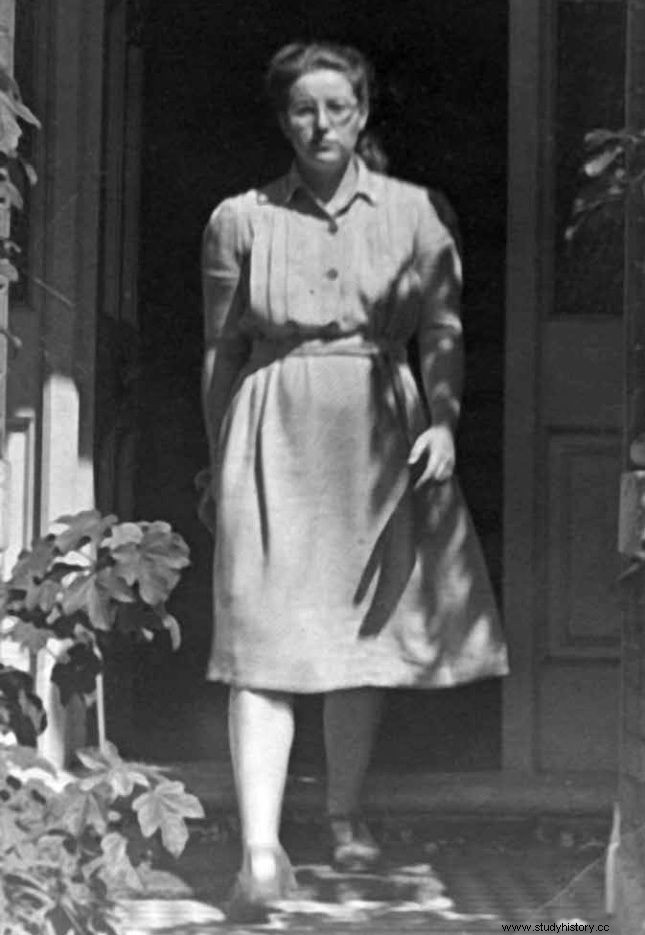
Magda Rusinek in a photo from 1948. A photo from the book "War Girls" (Znak Horyzont 2017).
Unfortunately, the young enforcer could not stay long in Haneczka's apartment. After a series of attacks in which she participated, she was already wanted. She changed places of residence like gloves. As he recalls:
Then, in 1942, 1943, I changed places very often, I had several sets of various documents and I started to be very careful - my sister and aunt had just been arrested. The company bought them for terrible money. Luckily, neither Marysia nor my aunt knew anything about me. Marysia, I got a good job - shorthand, good documents and Arbeitskarte.
Art of war sex appeal
During the war, beauty and grace were often more of a threat than a help to women. However, they could also become a very effective weapon. Ludwika Zachariasiewicz found out about it. She worked in Warsaw, in a shop and a beauty salon. In one of the rooms there was a warehouse of illegal tissue paper. One day, Zachariasiewicz heard a shooting in the street. Curious, she leaned out the door, but immediately stepped back when she saw the Germans nearby. But they saw her too. They ran after her and entered the store.
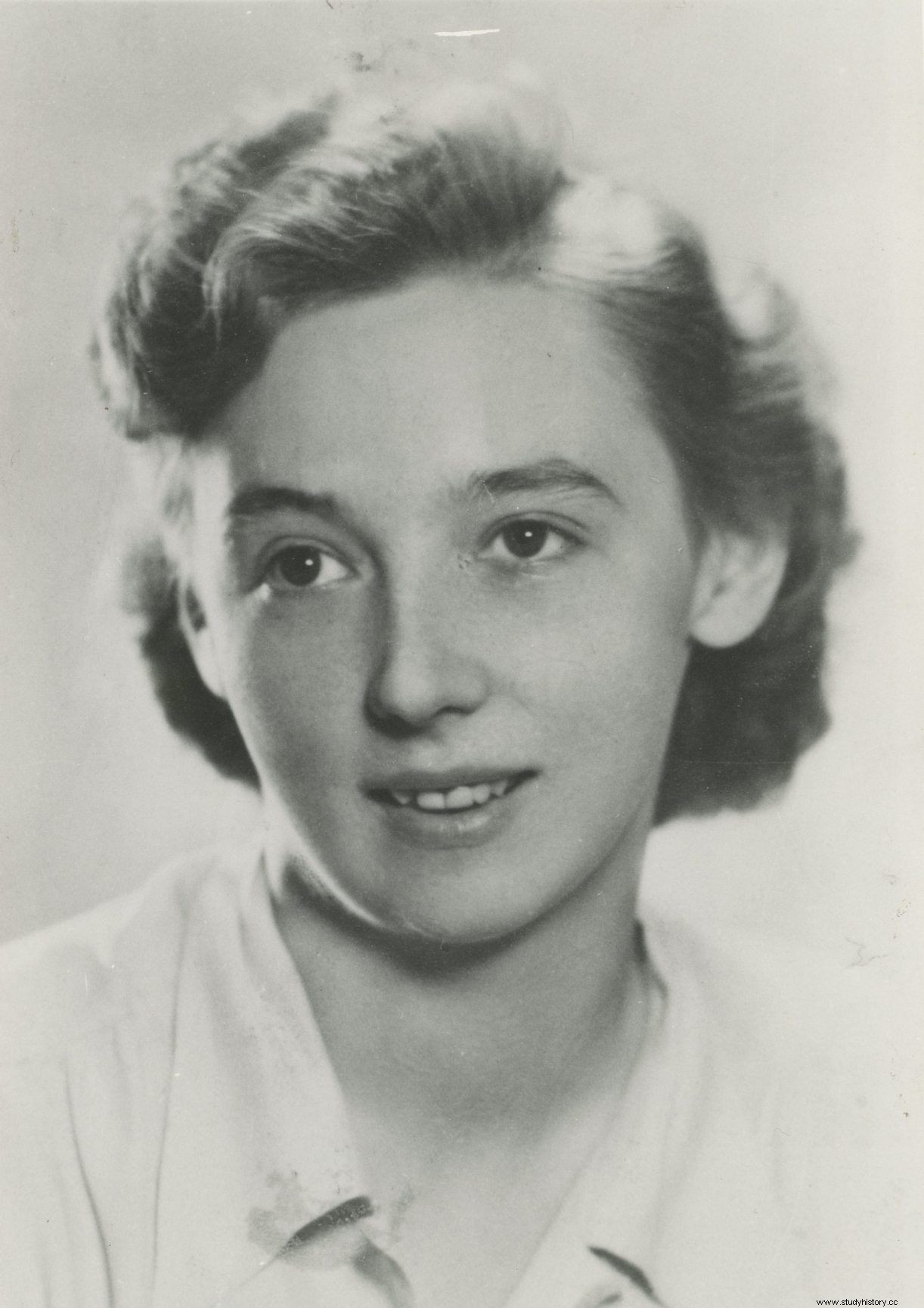
Ludwika Zachariasiewicz
This is how she talked about the whole situation:
- I looked. You shot, I looked! - I explain myself. Smiling, cheerful. I sat down on the counter nonchalantly, instead of sitting normally in a chair and being scared. I guess I was like that out of stupidity! Because not out of courage. And keep teasing them!
It was these Germans who started dating me:"Can I meet them?" And me flirtatiously:- With two at the same time, no. At most, first with one, then with the other. - What's in the other room? And there was a lot of blotting paper to take out, papers on the couch covered with cardboard boxes - When sometimes I don't want to go home, I sleep there, do you want to see? - Nein - they are laughing.
From then on, Ludwika dressed defiantly. She took care of an impeccable, fashionable hairstyle and walked with a certain, slightly flirting smile on her face. Undoubtedly, she differed from most female activists. “Girls from the underground were wearing flat heels, I was wearing high heels. I painted myself and attracted attention, "he admits.
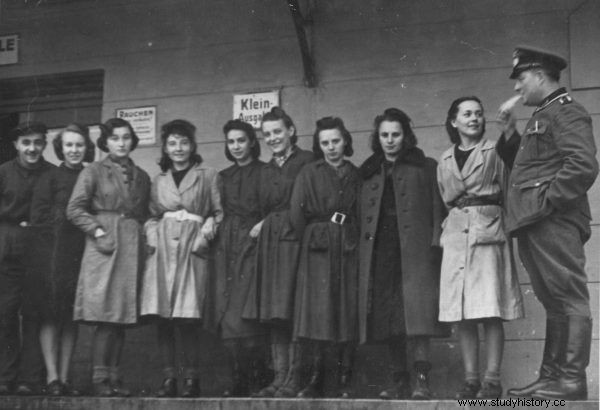
This is how most women dressed during the occupation. The photo comes from the book "War Girls" (Znak Horyzont 2017).
Of course, the methods used by the girls from the underground differed depending on the tasks they were entrusted with. Female liaison officers who carried weapons or blotting paper were more driven by practical considerations than fashion, for example by the spaciousness of their clothes. Those that were worked out by the people to be liquidated also, as a rule, preferred to remain unnoticed, so flat heels and a modest coat worked better than high heels and a short skirt. But in those cases where sex appeal happened to them, it became - quite literally - deadly .
Izabela Horodecka "Teresa" was a member of one of the most elite subversive and execution units in Warsaw 993 / W. She was a tough woman, and in her memories she does not go too far on clothes or makeup. It does not hide, however, that femininity was a standard weapon for women from this type of formation. For example, it came in handy during one of the executions in which "Teresa" took part. Then a certain Lubarski was killed in the vicinity of Pańska Street. As he recalls:
The departure took place from the apartment of Second Lieutenant "Kła", very conveniently located near ul. Lord's. For my sweet voice, four thugs in the composition of "Fang", "Sędzimir", "Sokół" and one more - they were allowed into the delinquent's apartment without difficulty (...) I was very pleased with this action and until Lieutenant "Porawa" had to silence me, that I do not reveal this joy too loudly in the street.
Sometimes it was intuitive for women to use sex appeal. But it was not always the case. Since Kedyw leadership sometimes quite explicitly recommended this method in training, some of the more experienced conspirators conducted regular courses on how to be sexy. One of them was Magda Rusinek. Activity in the execution units was not enough for her, so she started working with Żegota. And it was there that she gave valuable "instructions" to both women and men. As he says in Łukasz Modelski's book "War Girls":
My main task was "tanning" Jewish children and "learning to walk" adults . Jews couldn't walk the streets. At the sight of the armchair they were always overwhelmed with fear, paralysis, they looked down, ladies put a hat over their faces. I taught them not to look down, to be confident. Women - to go straight to the chief of patrol, swing your hip, smile flirtingly.
What was the aforementioned "firing" of Jewish children? This term should be taken literally. Hiding in cellars and other nooks and crannies, the little ones were usually so pale that they immediately caught the eye. So Rusinek went for walks with them, so that they would take on color. But also with the advice for adults, Magda hit the nail on the head. More than once sex appeal saved lives.
Rejuvenate (and play innocent)
It was not about defiant behavior at all. On many occasions, simply girlishness was enough. Very young girls did their best to rejuvenate themselves even more. They wore plaits, boarders' skirts, did not make makeup ... A Rusyn, who was a teenager herself at the time, could serve them as an example. “I was 17 years old. It helped me a lot that I was a girl, very young too, no one saw me as an agent. Thanks to this, I was able to obtain information that was not available to others. Nobody suspected me, "she admitted.
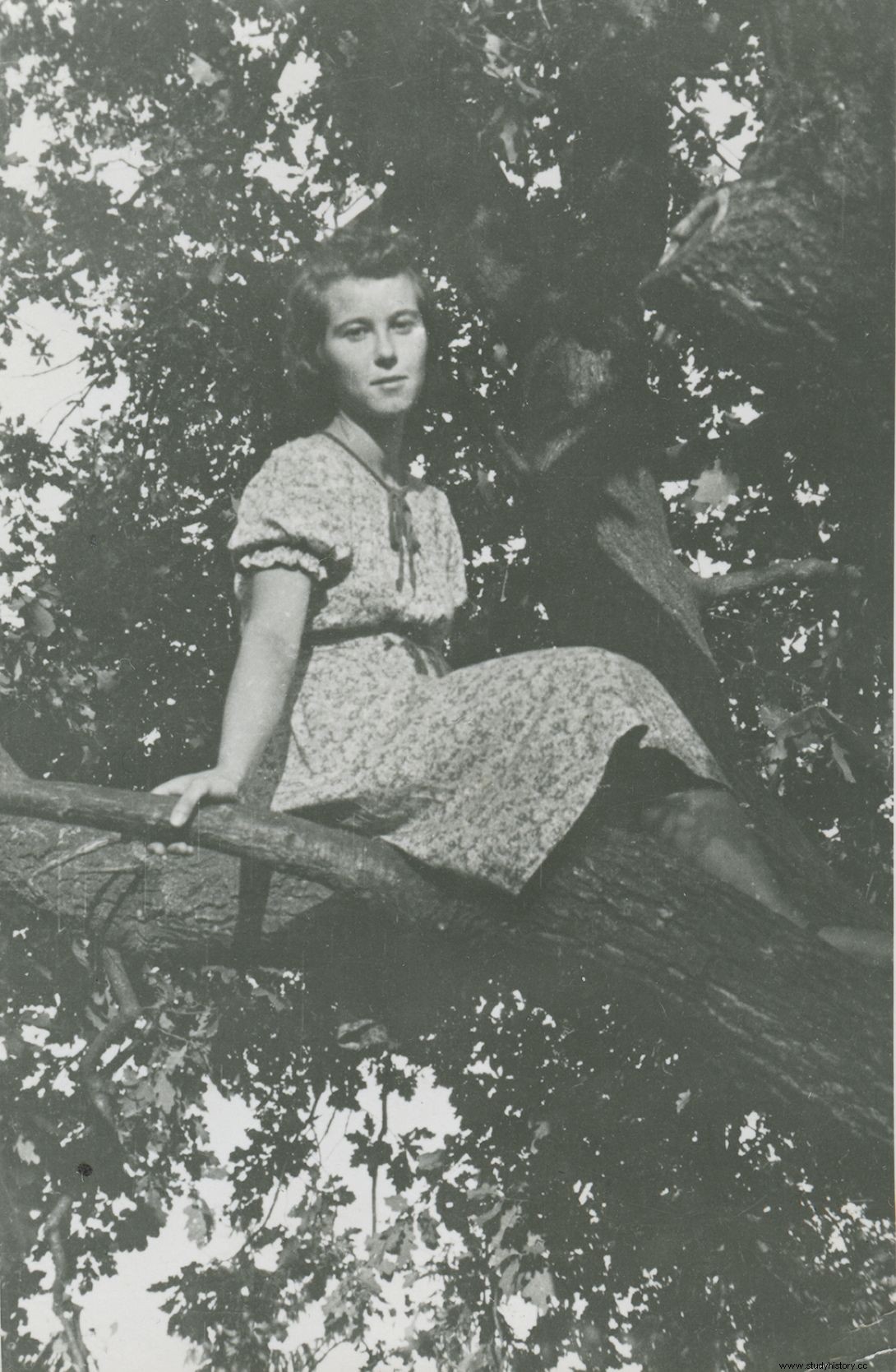
Halina Chlistunow. The photo comes from the book "Girls of war" (Znak Horyzont 2017).
Hala Chlistunow, another heroine of Modelski's book, who participated in the liquidation of the Home Army, went even further in this type of camouflage. At that time, she was three years older than the Rusinki, but during the operation she used a similar maneuver:she tricked the Germans into the charm of her youth. He tells about one of his missions:“I watched Maszewski from this cafe - the boys couldn't decide for a long time whether to do it outside, on the street, or sprinkle him at home. I pretended to be a girl in a handkerchief under her chin and with a milk can . Anyway, I did bring the milk from Klarysew, only when I came back I put a bulletin or university notes in the canister ”. It soon turned out that the camouflage was very effective:
There was no tram in Narutowicza Square, strangely empty at all. I had the last line to Klarysew just before the curfew at the Belvedere Palace. I thought that I would not stand and wait for the tram, decided to go. There were also Germans in the military buildings on Filtrowa Street, a bunker. A young man was walking in front of me. He was walking fast, a little nervously. I asked him for the time and he looked at his watch so abruptly. There was something unnatural about it.
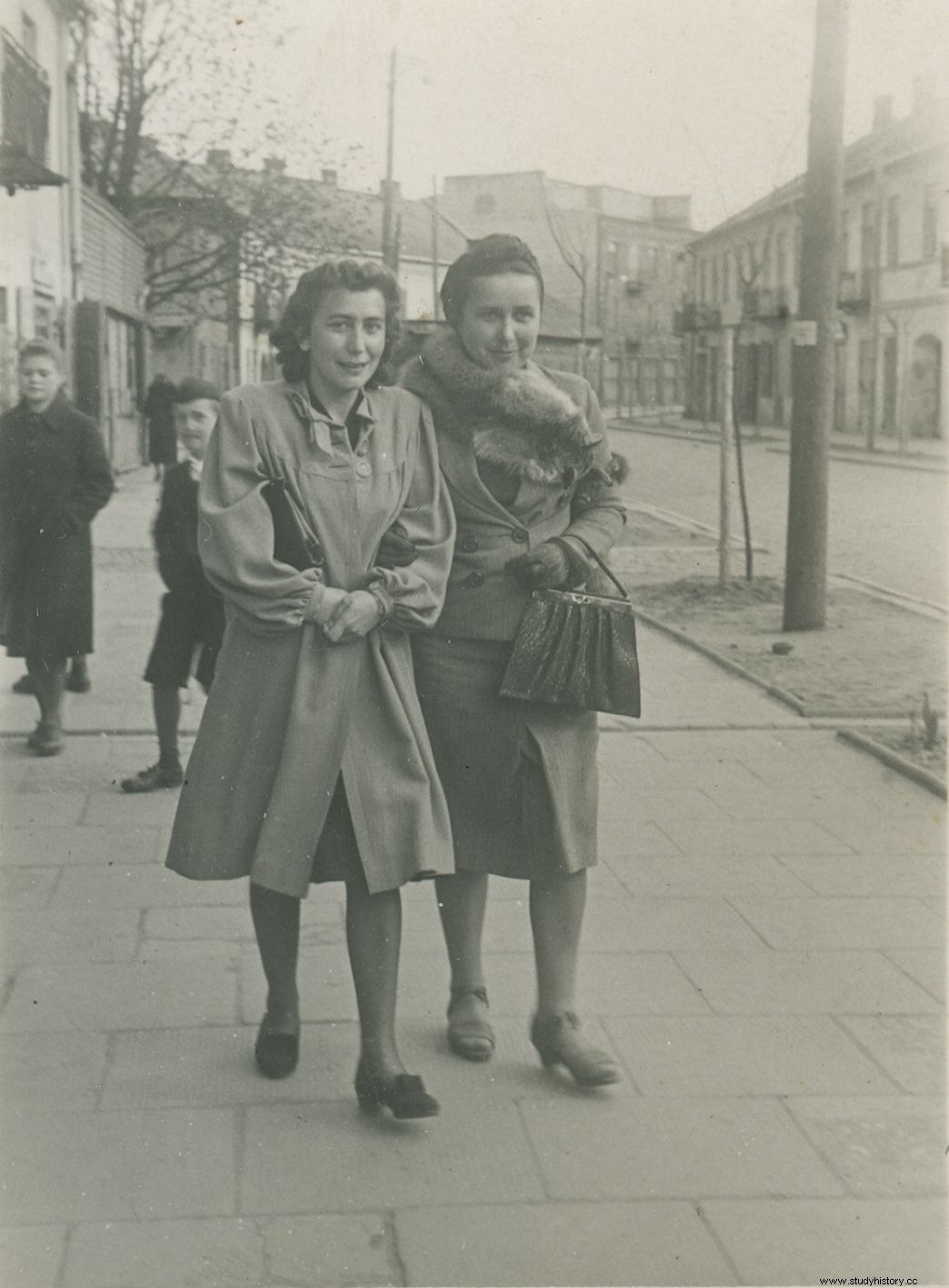
Zenobia Żurawska (on the right), 1943 The photo comes from the book "Girls of war" (Znak Horyzont 2017).
Screaming from the windows, gendarmes jumped out and stopped us both. There was probably an action somewhere nearby, there were no people on the streets, the trams were not running. A gun was found next to this boy. Fortunately, he behaved properly, he said exactly what I said:"I don't know, I see it for the first time in my life, she asked me for the hour." I was sure I wouldn't be coming home. But they let go, they didn't even look into the milk can.
Zenia Żurawska, who was not much older, though looking more serious than her peers, was in a slightly different situation. Like them, she dealt with investigating people suspected of collaborating with the Germans. However, while Rusinek and Chlistunow operated in Warsaw, a large city in which it is easy to remain anonymous, Żurawska operated in a small Wołomin near Warsaw. The risk of remembering her face was greater. She knew, however, that in case of exposure it would be safest to play in the male-female key. “At any moment, a person being followed could turn around and come face to face with me. I was prepared to say: »I like you« ”.
Massacre of visitors
Women have mastered the art of deception with a smile, but it must be remembered that when the need arose, they did not hesitate to use more traditional weapons. In Modelski's book, "War Girls" tells that the ladies cooperating with the execution and subversive forces not only distributed weapons, delivering them to the scene of one attack or another. They had one in their pocket always ready to shoot. And it was not an empty threat. Although the command tried to spare them from direct killing, it often turned out that, if necessary, the ladies shot no worse than the men.
The memories of Horodecka, who took part in the loud action in the Za Kotarą bar, tell a lot about it. In the small space of the premises, as "Teresa" put it:"general shooting and the massacre of almost all guests". She herself participated in the preparations for the action. Danuta Hibner "Nina" took part in it directly. And she showed perfectly well that the girls knew how to handle weapons:
Everything takes place at such a dizzying pace as on accelerated film. Instead of hands raised up, I see a standing Staszauer grabbing a telephone receiver, a characteristic gesture of a hand reaching into a pocket, a black flash of a revolver… Shots fired. A moment of hesitation, but "Lynx" and "Repair" are already ripping.
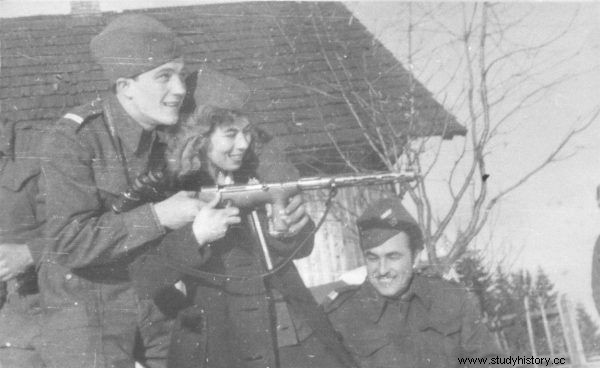
Learning to shoot. 1st Home Army Podhale Rifle Regiment. The photo comes from the book "Wielka Księga Armii Krajowej" (Znak Horyzont 2015).
I push the trigger. A man in a gray suit, leaning towards the hanger that serves as his cover, shoots at us. But Tadeusz will probably neutralize him in a moment, he has him closest. I am completely stunned, the roar of the shots is such that I have the impression that the entire> curtain
After this action, "Nina" was given to Virtutti Militari, another girl present inside, "Zosia" - Cross of Valor.
